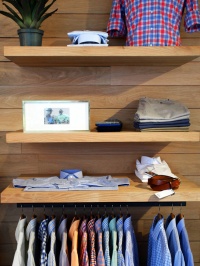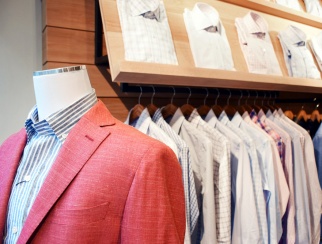This article was published in the September 2016 issue of STORES Magazine.
A specialty men’s retailer with an extremely small footprint needs a big reach to convert browsers into customers.
That’s what Richmond, Va.-based Ledbury learned when evaluating its marketing efforts last year. Ledbury has just three bricks-and-mortar stores in Richmond and Washington, D.C.; its products are also sold at high-end retailers around the country, but approximately 70 percent of the company’s sales are through its online portal.
“Increasing your conversion rate is always critical in online retail,” says Ledbury CEO Paul Trible, “but since it’s such a huge part of our business, we knew we had to do everything we could to keep those conversions going up.”
Multi-platform systems
The company was launched by Trible and Paul Watson in December 2009. The two were American MBA students in London who got their diplomas at the start of the Great Recession; due to a lack of C-suite offers, they took jobs as apprentices at a custom tailoring shop. They saw what went into the production of fine shirts — superior fabrics, designs and stitching — then decided to return stateside and start their own clothing company.

Most Ledbury shirts are in the $125 to $165 range; the company also offers pants, blazers and accessories such as socks, ties and belts. Trible describes his typical customer as 27 to 45 years old, a professional likely living near a major metropolitan area.
Ledbury began as an online-only business and its initial attempts at converting new customers were “hit or miss,” Trible says. The company was experiencing high volumes of abandoned baskets — due, at least in part, to the fact that some 90 percent of Ledbury customers are male and generally buying for themselves but unaccustomed to buying clothing online.
Earlier this year, Trible started talking to digital marketing firm Yieldify. “Ledbury’s main goal was finding new customers, which is pretty essential for newer businesses,” says Richard Sharp, Yieldify’s chief technology officer. “We showed them what kind of campaigns we could do and how we could focus on lead generation.”
Yieldify promotes the fact that minimal work or monitoring is required by its clients. The retailer’s IT manager inserts a single JavaScript pack into the site that feeds information back to Yieldify. “From there on, we provide a managed service,” Sharp says. “We work with the retailer to develop campaign ideas, handle the design and make it live.”
Sharp believes that these types of “minimally invasive” programs will grow in enterprise software, since retailers often maintain a large collection of hardware and software. “The types of architecture we see are often fragmented. A retailer might have overhauled all their systems a few years ago, but they kept something and they’ve upgraded others more recently. The result is a patchwork of systems and you really need something cloud-based that can be easily used across multiple platforms,” he says.
“Many retailers are in a position where they don’t want to interfere with their business by getting lots of new hardware and software,” he says. “They don’t have to with something like Yieldify.”
One issue that typically affects a retailer’s conversion efforts is not knowing what offer to show a potential customer, and when.
“Value propositions are complicated,” Sharp says. “You might offer free shipping after spending a certain amount, or a certain percentage off if you spend above a certain amount. But the key is finding what and when to trigger an offer.”

“Turning that person who browses our catalog into a customer can take 30 to 60 days,” says Ledbury CEO Paul Trible.
Creating an impression
Trible and his team learned early on that finely tailored men’s clothing was more than just an impulse buy. Ledbury saw plenty of abandoned shopping carts each day in their statistics, right around the industry average of 70 percent. “We’re dealing with a very savvy customer base,” he says, “one that needs to be engaged in what we do.”
The Ledbury site is filled with content about the brand, explaining good fit and quality. Videos show how the shirts are made, describe how they differ from other products and give shoppers a sense of what the company is about.
“With an average basket of $145, we know we’re not going to get many gut reaction purchases,” Trible says, pointing out that a consumer is more likely to make an impulse buy at a lower price point.
“We figure we need about seven to nine touches through email or digital ads to create an impression on a shopper,” he says. “Turning that person who browses our catalog into a customer can take 30 to 60 days.”
The Yieldify strategy involves predictive marketing, which not only tracks the pages a shopper visits, but also the duration and movements of the mouse. “Hovering” over an item can indicate that this is something the shopper is thinking of buying. Yieldify reacts to the potential customer with targeted offers to get him to pull the trigger and click “buy.”
“People who were shopping us, then moving to other sites, received targeted advertising to bring them back.”
Paul Trible
Ledbury
“We had our own resources for pop-ups and lead generation, and we were focused on converting new customers by introducing them to our experience,” Trible says. “With Yieldify … people who were shopping us, then moving to other sites, received targeted advertising to bring them back.”
Evaluating effectiveness
Within a few weeks of incorporating Yieldify, the Ledbury team experimented with its first offer: A pop-up of 10 percent off a purchase of $200 or more was sent to customers who had visited the site.
“We saw a pretty healthy increase of new customers with that one, and since then we’ve been looking to see what kind of thresholds and offers work best,” Trible says. “We had been giving a 10 percent discount on a lower basket value, so we have to evaluate — what triggers the most purchases? Does a lower price point with a percent discount increase the number of items in the basket? What role does free shipping play? That’s what we’re testing.”
“The idea is to give the shopper the right message at the right time,” Sharp says. “You don’t want to give him a chart of offers to read through. The customer puts something in his basket, tell him right away that he’s got free delivery. It’s one of those things that can trigger a purchase at that moment.”
Other targeted ads that prompt conversions include discounts based on dollar amounts added to an order and overnight shipping for orders placed before 2 p.m.
“With this kind of advertising, you’re simply pointing out the value of buying something from you right now,” Sharp says.
“We see the digital part of our business growing, especially due to mobile platforms,” Trible says. “And as that grows, we need to be on top of what motivates our customers.”